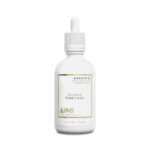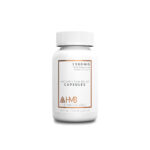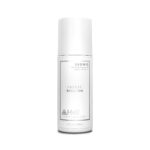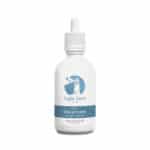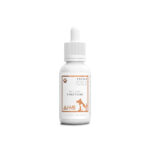The Hemp Mind & Body team understands the lack of knowledge is a primary cause in trusting hemp and hemp-based products. And rightfully so.
HMB’s mission is to responsibly share information about the accurate and fundamental science underlying the pharmacologic properties found in cannabinoids and adaptogens.
Below are some of the most frequently asked questions:
Cannabidiol (CBD) is a naturally-occurring constituent of industrial hemp/cannabis. Its formula is C21H30O2 and it has a molecular mass of 314.4636. It is the most abundant non-psychoactive cannabinoid found in cannabis and is being scientifically investigated for various reasons.
CBD oil is a cannabis oil (whether derived from marijuana or industrial hemp, as the word cannabis is the Latin genus name for both) that has significant amounts of cannabidiol (CBD) contained within it. The legal requirement is formulations/products must be under .3 THC to be legal in the United States. Many other countries around the world use the same requirements with minor variations in acceptable THC content.
Our CBD products and extracts are derived from industrial hemp, so they could be considered CBD- rich hemp oil, hemp-derived CBD oil, CBD-rich cannabis oil, or plainly “hemp extracts” since they typically contain much more than just CBD. Again, cannabis doesn’t mean marijuana but is the genus name and general umbrella term which all forms of marijuana and hemp fall under. The form of cannabis we use for our CBD and hemp extracts is industrial hemp; we do not sell marijuana or products derived from whole-plant extractions.
On December 20, 2018, President Donald J. Trump signed into law the 2018 Agricultural Improvement Act, otherwise known as the 2018 farm bill. This act contained language specifically inserted by Senate Majority Leader Mitch McConnell (KY) that completely legalized industrial hemp and ended nearly 80 years of prohibition on the plant. Hemp is now completely exempt from the definition of the controlled substance act (CSA).
Furthermore, the 2018 farm bill clarified the definition of hemp — often limited to fiber and seed — to include the entire plant, specifically the floral parts and cannabinoids derived from it. This put into motion the legal framework for the already burgeoning marketplace for hemp and CBD extracts.
The 2018 farm bill also opened up the ability for tribal lands to grow hemp and made provisions for USDA crop insurance and grants.
Scientifically, industrial Hemp and Marijuana are the same plants, with a genus and species name of Cannabis Sativa. They have a drastically different genetic profile though. Industrial Hemp is always a strain of Cannabis sativa, while marijuana can be Cannabis Sativa, Cannabis Indica, or Cannabis Ruderalis. The major difference is how industrial hemp has been bred compared to a marijuana form of Cannabis sativa.
Typically speaking, industrial hemp is very fibrous, with long strong stalks, and barely has any flowering buds, while a marijuana strain of Cannabis sativa will be smaller, bushier, and full of flowering buds. However, newer industrial hemp varieties in the USA are being bred but have underperformed in quality and efficacy compared to its EU counterpart. Nearly all of our extracted materials come from the EU where generational farmers have been working with hemp for decades and the soil and climate are impeccable.
99% of the time marijuana has a high amount of THC and only a very low amount of CBD. Hemp on the other hand naturally has a very high amount of CBD in most instances and only a trace amount of THC. Fortunately, the cannabinoid profile of hemp is ideal for people looking for benefits from cannabis without the “high.” Hemp is used for making herbal supplements, food, fiber, rope, paper, bricks, oil, natural plastic, and so much more, whereas marijuana is usually used just recreationally, spiritually, and medicinally. The term cannabis oil can refer to either marijuana or hemp-derived oil since marijuana and hemp are two different forms of cannabis.
In the USA the legal definition of “industrial hemp,” per Section 7606 of the Agricultural Appropriations Act of 2014, is “INDUSTRIAL HEMP — The term ‘‘industrial hemp’’ means the plant Cannabis sativa L. and any part of such plant, whether growing or not, with a delta-9 tetrahydrocannabinol concentration of not more than 0.3 percent on a dry weight basis.”
The short answer is yes. CBD is CBD, whether from marijuana or hemp. Most marijuana has a very low non-psychoactive cannabinoid profile (like CBD, CBC, CBG), so most of the time hemp would be much more preferable for anything besides THC. Marijuana is usually very high in THC (gives people the high) but usually very low in other non-psychoactive cannabinoids.
Cannabinoids are the chemicals that give the cannabis plant its medical and recreational properties. Among the 113 cannabinoids produced, THC and CBD are the most prevalent and the most well-understood. Most strains of marijuana sold today are cultivated with higher levels of THC.
THC is known for its psychoactive properties and is the reason you feel “high” after ingesting marijuana.
CBD is a non-psychoactive cannabinoid and actually works to counteract the high. CBD also has numerous benefits, such as anti-inflammatory and neuroprotective properties.
Whether produced by the body or in a plant, these naturally-occurring compounds all interact with the endocannabinoid system.
Our raw extracts have varying percentages of cannabinoid and cannabidiol (CBD) content, the range being 10%-99%. Each product has a unique formulation and uses varying ratios of our extract types. Our CBD Isolate is over 99% pure CBD and our water-soluble products have been nano-sized for maximum absorption.
There is no easy answer to this. Our starting recommended serving size is listed on each of our products, but we generally recommend experimenting to see what feels best to you. It is wise to start and titrate slowly based on the severity of ailment/condition and desired effects. There has not been a lethal dose of CBD yet to be discovered. Lab rats were given 1000x the human dose and were still able to traverse mazes with no significant side effects. The condition of an individual’s Endocannabinoid System (ECS) largely determines the realized benefits. It is suggested that individuals commit to a 90-day CBD regimen to allow the ECS to stabilize and bring the body back into homeostasis (balance).
To speak with a certified cannabis clinician to discuss dosing to combat your condition or ailment, please click here.
In accordance with federal regulations, we cannot make health claims regarding our dietary supplement products. We can only recommend our products for general wellness.
Not quite. Ours are from hemp and RSHO is usually using marijuana, a different form of cannabis than industrial hemp. Our industrial hemp extracts are more standardized and will usually have a much higher content of non-psychoactive cannabinoids like CBD than one produced through the Rick Simpson method. Oils produced through his method will usually have a much higher THC content, as it’s typically marijuana that is used for RSHO.†
Generally speaking, most marijuana producers and sellers (especially on the black market) don’t test for contaminants (metals, pesticides, bacteria, etc.). Rick Simpson Hemp Oil is actually more a method of extraction than it is a specific product. People use the Rick Simpson method with hundreds of different strains of marijuana, so the THC, CBD and other cannabinoid content of the final oil are always varying greatly, depending on the cannabis the consumers are acquiring. Usually what’s used for Rick Simpson oil is a strain with an inferior CBD content (and high THC) because that’s what the vast amount of marijuana is nowadays.
HMB hemp is grown in the State of Texas where we guide the Dept. of Ag on how to properly grow hemp for therapeutic applications. HMB also sources specific minor cannabinoids from the mountains of the Netherlands where the highest quality raw cannabinoids are grown.
HMB uses a cold-pressed extraction process as much as possible to alleviate the use for extraction solvents. Additionally, HMB uses a hydrocarbon extraction process to maintain cannabinoid integrity from degradation which protects maximum bioavailability and therapeutic application.
We have an industry-leading quality control system, and we have third party laboratories analyze all of our hemp extracts and our final products for cannabinoid potency, heavy metals, bacterial and microbial life, mycotoxins (fungus) and pesticides.
“The endocannabinoid system (ECS) is a group of endogenous cannabinoid receptors located in the mammalian brain and throughout the central and peripheral nervous systems, consisting of neuromodulatory lipids and their receptors.” Wikipedia
There are two main types of receptors in the ECS, CB1, and CB2. CB1 receptors are primarily located in the central nervous system and brains of mammals, and CB2 are generally found in the peripheral nervous system. There are two main cannabinoids mammals produce- 2AG and Anandamide (named after the Sanskrit term “Ananda” which translates to “bliss”).
For hundreds of millions of years, every vertebrate on Earth has been equipped with this eCS, a crucial system in the body, and it has been known about in the scientific and medical communities since the 1980s. However, it’s still not taught in most medical schools.
HMB hemp extracts contain more than 80 different cannabinoids such as cannabidiol (CBD), CBG, CBN, CBC, and the acidic versions of these active ingredients. In addition to the cannabinoids naturally present in HMB’s hemp extracts, there are also many other types of natural molecules and phytochemical compounds such as amino acids, carbohydrates, vitamins (B1, B2, B6, and Vitamin D), fatty acids (Omega 3 & 6), trace minerals (iron, zinc, calcium, magnesium, potassium), beta-carotene, chlorophyll, flavonoids, ketones, nitrogenous compounds, alkanes, glycosides, pigments, water, and terpenes.
The most common terpenes cultivated in HMB extracts include myrcene, beta-caryophyllene, linalool, pinene, limonene, and alpha-humulene.
HMB™ Full-Spectrum Hemp Oil is in its most natural form, pressed directly from the mature stalk of the plant. This process is similar to that of juicing fruit. In this form, the CBD Hemp Oil contains unique properties to Global Health Brands other forms of Premium Hemp Oil because it contains carboxylic acid, known as CBDa.
HMB™ Premium Decarboxylated Hemp Oil
After the hemp plant is pressed, the hemp oil is extracted through a CO2 supercritical process and is decarboxylated. This process turns the acidic cannabinoids into active cannabinoids while maintaining its natural form. At this stage, the hemp oil still contains waxes, lipids, chlorophylls, terpenes, and natural plant material.
HMB™ Premium Filtered Hemp Oil
After the hemp oil is decarboxylated, there is a final filtering process. This final filtering process allows for more waxes and plant materials to be removed, yielding the highest CBD levels of the three forms of hemp oil.
First, it is important to note that cannabinoid receptors do not exist in the brain stem like opioid receptors do. There has never been a fatality directly contributed to cannabis because the possibility of a cardiorespiratory event (stop breathing) simply does not exist because receptors for cannabinoids do not live in the brain stem. The brain stem is responsible for regulating most of the body’s automatic functions that are essential for life, like breathing.
What is considered too much?
According to a 2011 study, published in the Current Drug Safety, the “toxic” dose of CBD falls roughly around 20,000mg of CBD, taken almost all at once. To put this in context, it’s key to note that the suggested starting dose for most conditions is in the ballpark 50-100mg per day. Most CBD tinctures contain between 300 and 6000mg in the entire bottle. In conclusion, this means that an individual would have to ingest between 13 and 200 full bottles of CBD tincture all at once, depending on the concentration of the CBD tinctures.
The bottom line is when CBD is taken at recommended doses, or, even above the recommended daily doses, the average CBD user does not need to worry about taking too much. The general consensus among professionals and even the World Health Organization, is that even in extremely large doses, CBD is likely to cause extreme drowsiness, lethargy, gastric distress, nausea, diarrhea and other unpleasant side effects, but not death.
Studies show doses up to 1,500 milligrams a day have been well-tolerated.
Full-spectrum is CBD accompanied by all cannabinoids, flavonoids, terpenoids, chlorophyll, and other phyto-botanical constituents of botany, including THC. It is imperative to note that the main difference between Isolate, Full-Spectrum and Broad-Spectrum products are the presence of THC (tetrahydrocannabinol). THC is the famous cannabinoid that causes a user to feel “high” or “high” after smoking or ingesting.
**CRITICAL NOTICE**Full-spectrum, fully legal, and compatible CBD products contain small amounts of THC below the legal limit of 0.3% THC. Although these products are legal and can be purchased at a grocery store, CBD products derived from Full-Spectrum hemp can cause a positive drug test.
